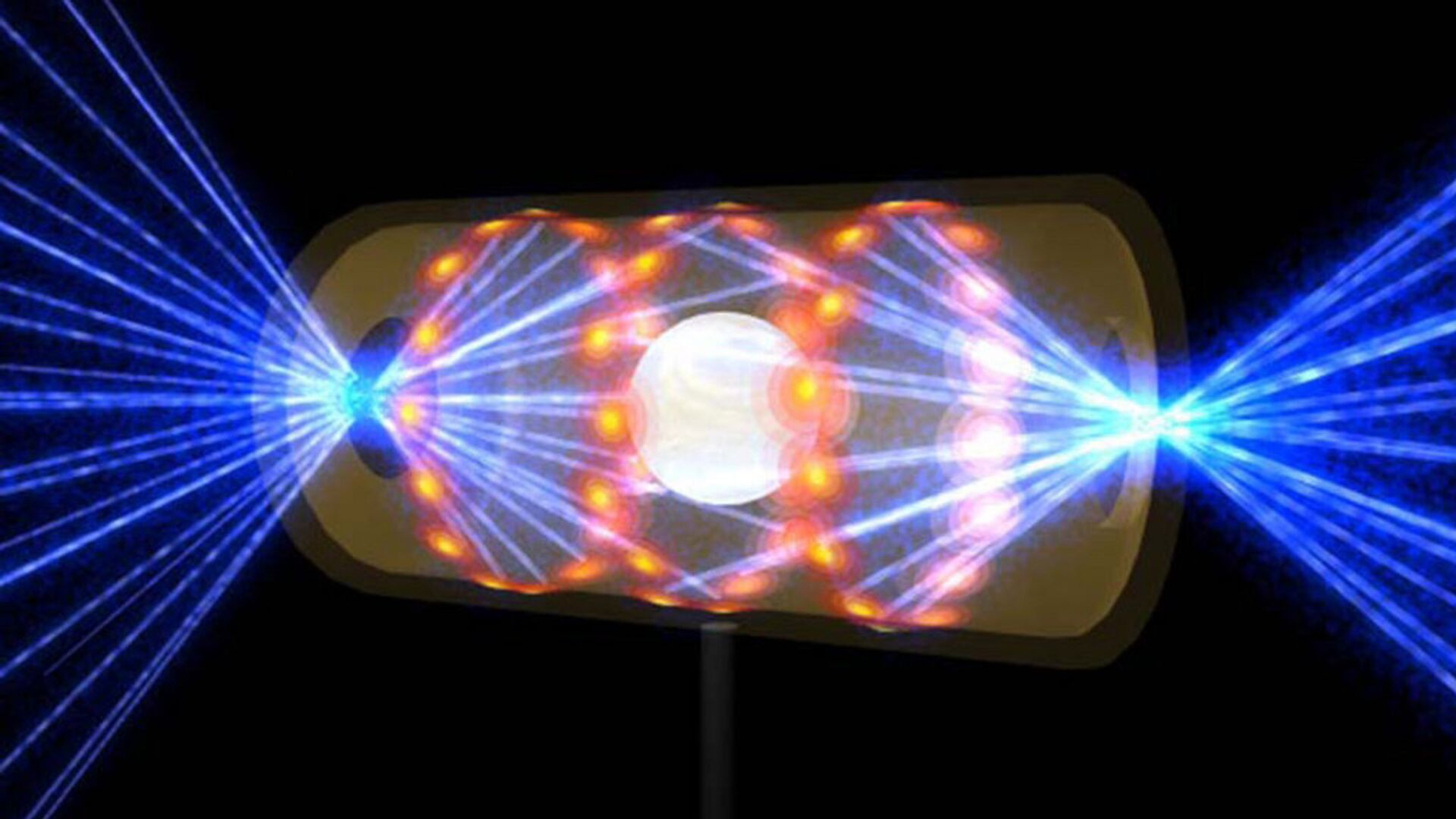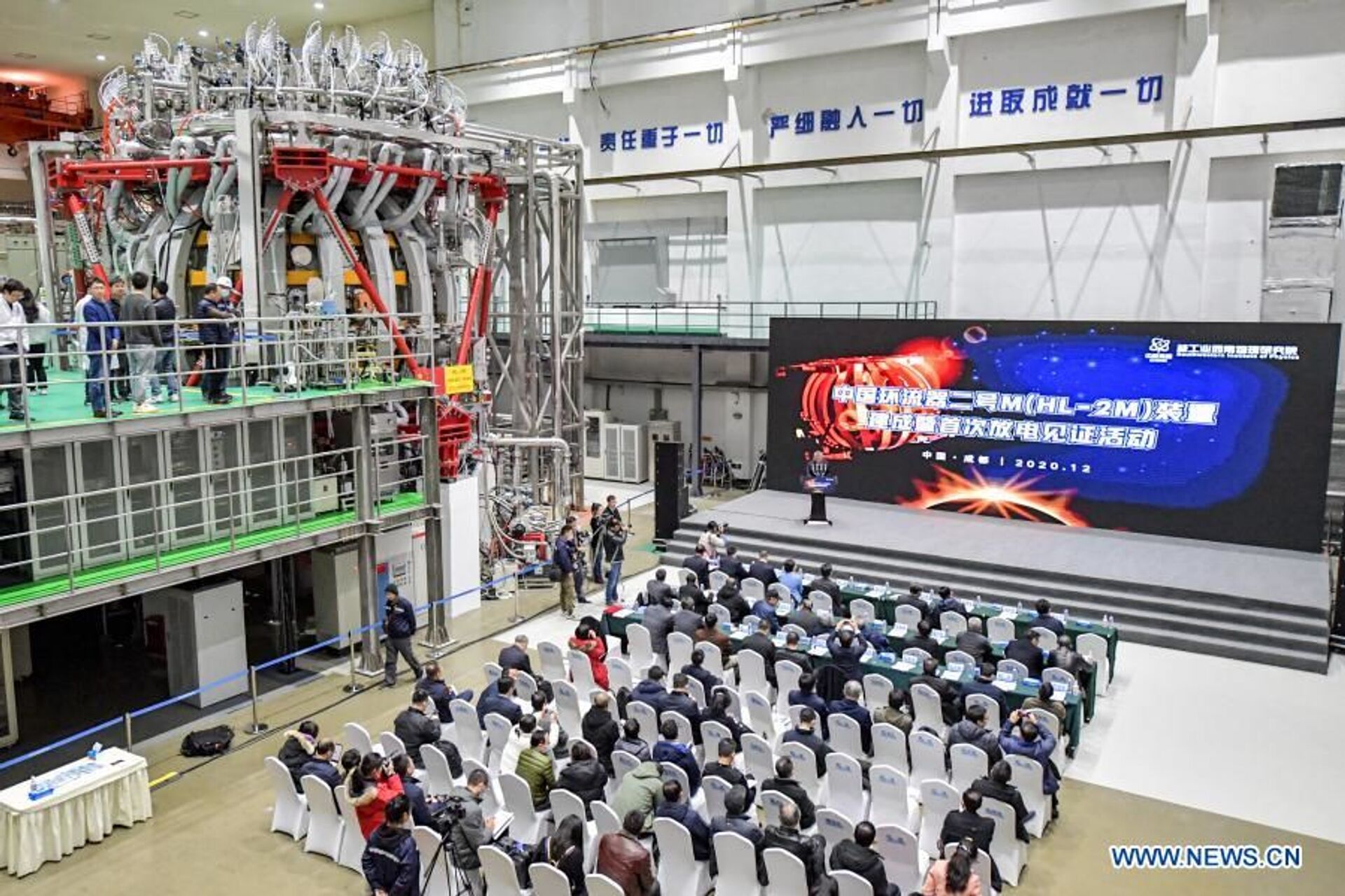US to Announce ‘Breakthrough’ in Efforts to Generate Clean Energy Through Nuclear Fusion

© National Ignition Facility
Subscribe
Turning fusion power into a viable clean energy alternative is seen as key to maintaining human civilization’s present electrical use amid efforts to rapidly end the use of fossil fuels, which emit poisonous chemicals that are driving the climate change crisis.
US Energy Secretary Jennifer Granholm has confirmed media rumors, revealing that the department is preparing a big announcement concerning nuclear fusion energy on Tuesday.
According to US media reports, the scientists working on the project at the Lawrence Livermore National Laboratory created a fusion reaction with a net gain for the first time.
Long held as the “holy grail” of abundant, pollution-free energy, nuclear fusion has managed to elude scientists for nearly three quarters of a century since its radioactive cousin, nuclear fission, emerged as a potent source of electricity.
Nuclear fusion is the incredible energy-generating reaction that occurs in the centers of stars, giving them their tremendous glow. It happens when intense pressure forces two atoms to fuse into a single atom, an event that releases huge amounts of energy. When the fusing atoms are hydrogen, they produce the inert gas helium - and, essentially, do not produce any radioactivity.
Nuclear fission, the explosive power released when atoms are split, produces great quantities of radioactive materials. The far easier reaction to induce, fission is what drives all present-day nuclear power plants, relying on heavy, radioactive elements like uranium and plutonium, which are primed and ready for just such a reaction.

Photo taken on Dec. 4, 2020 shows the site of the completion ceremony of HL-2M Tokamak, China's new-generation "artificial sun," in Chengdu, southwest China's Sichuan Province. The HL-2M Tokamak went into operation on Friday and achieved its first plasma discharge, according to China National Nuclear Corporation (CNNC).
© Xinhua
By contrast, hydrogen is not simply waiting around to fuse into helium - part of what makes creating it artificially so elusive.
Scientists have tried since the 1940s to figure out how to create nuclear fusion, but so far have mostly only been successful in the lab for microseconds at a time, requiring far more energy input than the tiny reaction produces. Their greatest success has been at destruction: the incredible power of a thermonuclear hydrogen bomb is the only place scientists have created nuclear fusion so far - not an ideal candidate for a future power plant.
Other countries have also funded efforts to uncover the secrets of viable fusion power, including the UK, Russia, South Korea and China, where such a reactor is euphemistically-but not inaccurately - referred to as an “artificial sun.” A South Korean lab succeeded earlier this year at keeping matter in the ionized, superheated plasma state necessary for fusion for a full 30 seconds.
